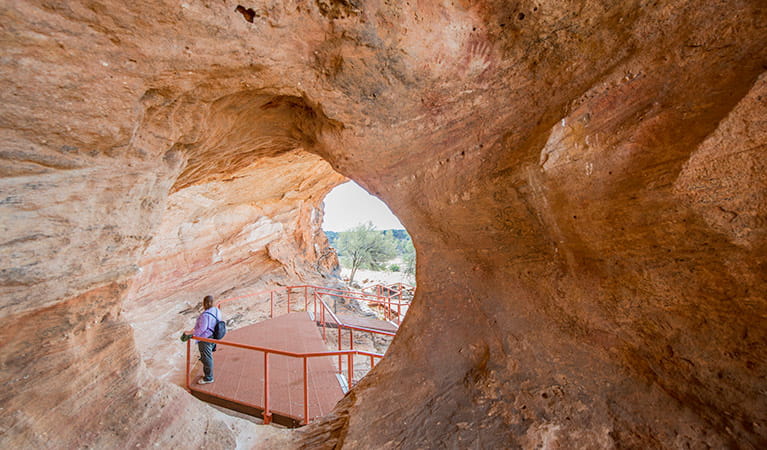Mutawintji Historic Site
Overview
Book a tour to see Aboriginal rock art, hear Dreamtime stories, and learn about Aboriginal culture at Mutawintji Historic Site. This ancient landscape is located near Broken Hill in outback NSW.
Read more about Mutawintji Historic Site
If the spectacular landscape of Mutawintji doesn’t take your breath away, then the Aboriginal art at Mutawintji Historic Site surely will. This wonderful area within Mutawintji National Park boasts one of the best collections of Aboriginal art in New South Wales.
You can only visit this special park by taking a guided tour with Mutawintji Heritage Tours. Set off on a 2-4 hour walk, discovering the site’s history and culture, beginning with an audio-visual display and continuing through the ancient landscapes. Parts of the walk up to the site are challenging, but you’ll be so busy admiring the outstanding scenery, you probably won’t notice.
At every turn, the ancient wonders of Mutawintji reveal themselves. You’ll see Aboriginal rock engravings and ochre stencils. Down on the flat plains you'll spot the remains of fireplaces, stone flakes and grinding stones. Kids and adults alike will enjoy listening to Aboriginal guides share their Dreamtime stories.
If you'd like to stay in the area you can book a campsite at Homestead Creek campground and enjoy the serenity of the Australian outback. Savour uninterrupted sunrises, sunsets and the mesmerising brightness of the outback stars.
Local alerts
For the latest updates on fires, closures and other alerts in this area, see https://www.nationalparks.nsw.gov.au/visit-a-park/parks/mutawintji-historic-site/local-alerts
Contact
- in the Outback NSW region
Entry to Mutawintji Historic Site is only possible when you book a tour with Mutawintji Heritage Tours.
-
-
Broken Hill office
08 8084 2880
Contact hours: Monday to Friday, 8.30am to 4.30pm. Closed 1pm to 2pm. - 183 Argent Street, Broken Hill NSW 2880
-
Email: npws.westdarling@environment.nsw.gov.au
-
Broken Hill office
Visitor info
All the practical information you need to know about Mutawintji Historic Site.
Map
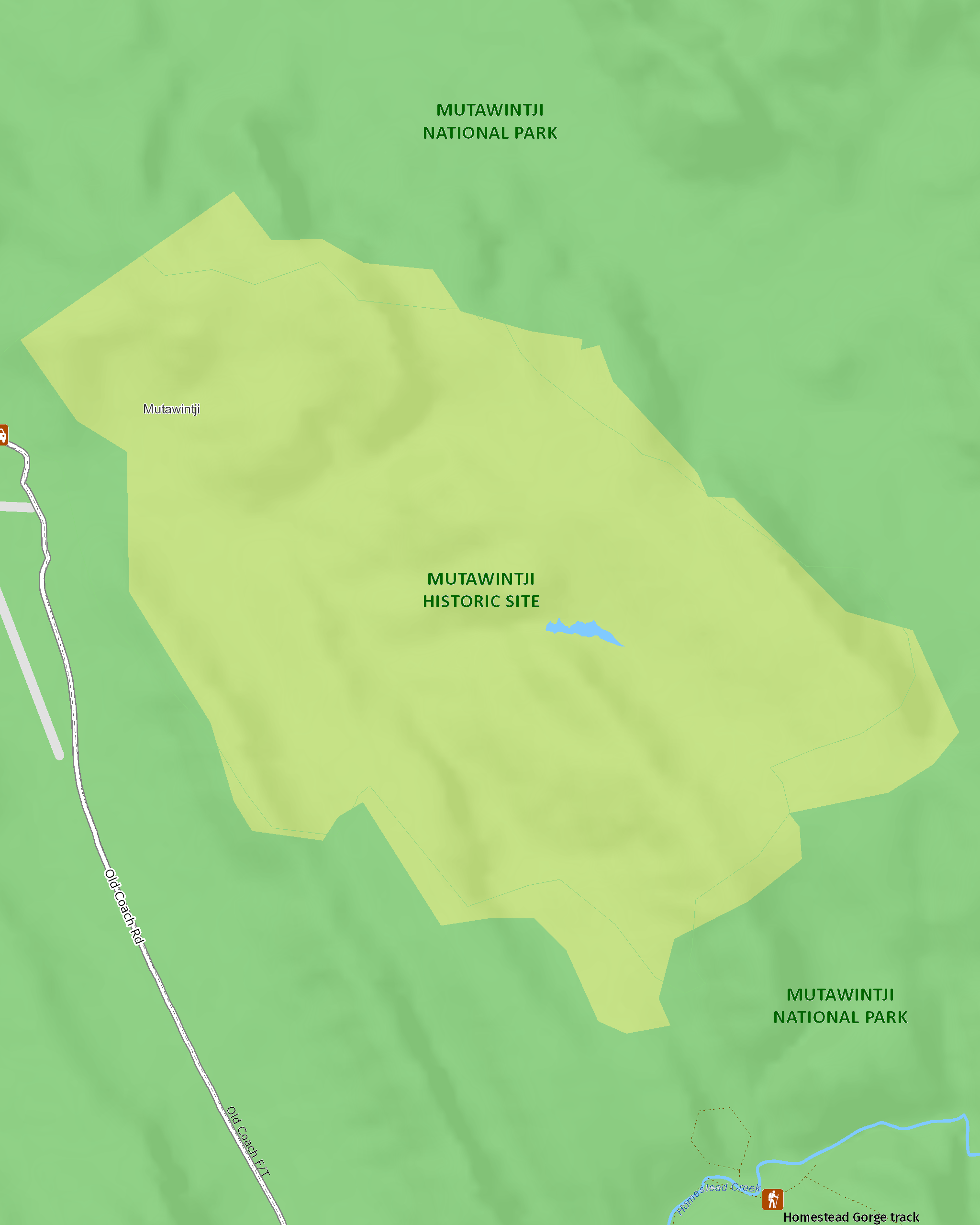
Map legend

Getting there and parking
Get driving directions
You can only enter this park if you have a booking with an accredited commercial tour operator.
From Broken Hill:
- Take Silver City Highway towards Tibooburra and look for the Mutawintji National Park turnoff on your right
or
- Take Barrier Highway 75km from Broken Hill, look for the Mutawintji National Park turnoff on your left, turn onto the dirt road and then onto Mutawintji National Park.
From Tibooburra:
- Take Silver City Highway towards Broken Hill and look for the Mutawintji National Park turnoff on your left
Parking
- Split Rock walking track See on map
By bike
Check out the Bicycle information for NSW website for more information.
By public transport
Mutawintji Historic Site and Mutawintji National Park are not accessible via public transport.
Best times to visit
Autumn
Autumn offers ideal weather for a visit to Mutawintji Historic Site.
Spring
The most popular time to visit Mutawintji National Park is during spring as daytime weather is pleasant and the nights are not yet too cold.
Weather, temperature and rainfall
Summer temperature
Average
30°C and 35°C
Highest recorded
48.6°C
Winter temperature
Average
17°C and 21°C
Lowest recorded
-3.3°C
Rainfall
Wettest month
January
Driest month
September
The area’s highest recorded rainfall in one day
140.2mm in one day
Facilities
Picnic tables
Maps and downloads
Prohibited
Pets
Pets and domestic animals (other than certified assistance animals) are not permitted. Find out which regional parks allow dog walking and see the pets in parks policy for more information.
Smoking
NSW national parks are no smoking areas.
Learn more
Mutawintji Historic Site is a special place. Here are just some of the reasons why:
Amazing Aboriginal art
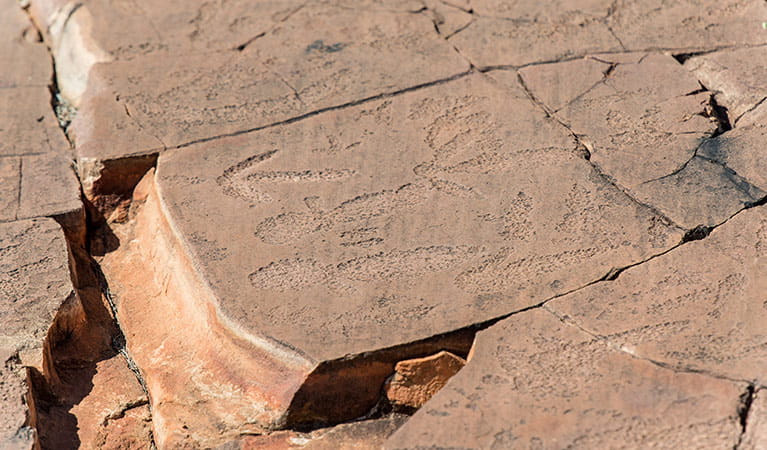
The area of Mutawintji National Park is the traditional land of the Pantjikali, Wanyuparlku, Wilyakali and Malyangapa people. Mutawintji has been a significant meeting place for local cultures for thousands of years. Mutawintji Historic Site is the cultural heart of the region and has enormous cultural significance. Communities have performed initiations, rainmaking and other ceremonies here in gatherings of up to 1,000 people. It also boasts one of the largest collections of Aboriginal rock art in New South Wales. Today, it continues to be a place of living culture, with Aboriginal people from around the region gathering here for cultural purposes and to hold meetings. To discover the ancient wonders of this special place it's necessary to visit on a guided tour.
Iconic scenery
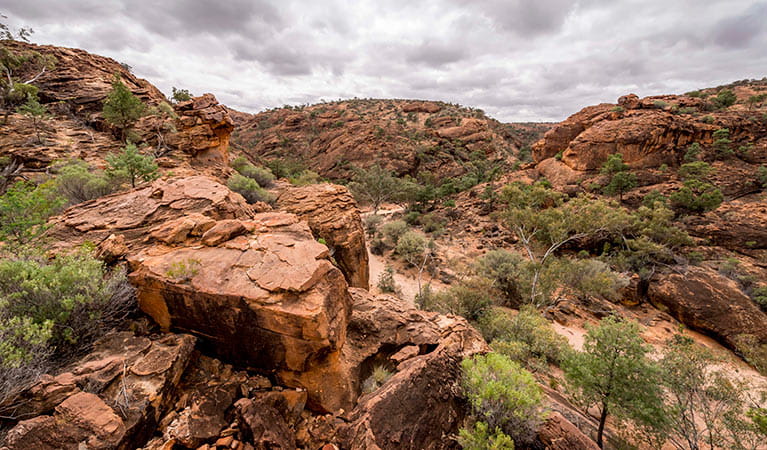
Mutawintji Historic Site and Mutawintji National Park display the classic outback landscape for which Australia is famous around the world. Travel along red dirt roads among rugged gorges and desert and against the backdrop of the ever-changing colour of the Byngnano Ranges. Discover the peace and space of this outback NSW desert. Beyond the ridges, the saltbush and mulga plains stretch to the horizon, making city life seem a long, long way away.
A wildlife wonderland
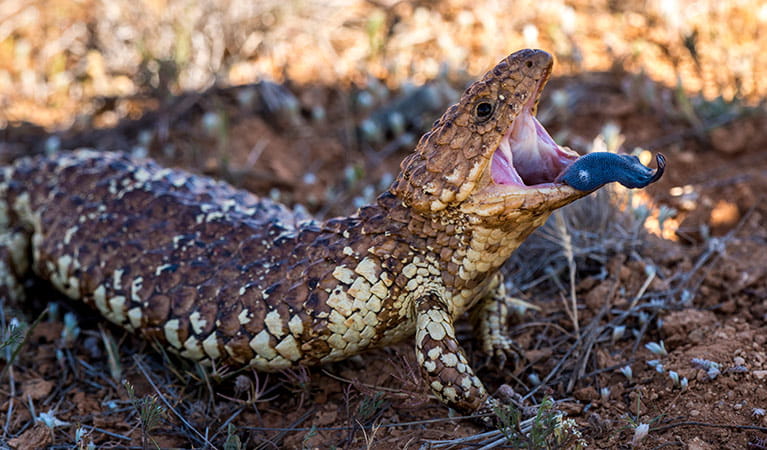
It might feel peaceful here, but Mutawintji teems with wildlife that has occupied these lands since ancient times. You might see a wedge-tailed eagle or peregrine falcon as you enjoy the chatter of noisy short-billed correllas, zebra finches, budgerigars, apostle birds and magpies. Goannas and snakes might cross your path or you may spot an endangered yellow-footed rock wallaby on the park's rocky ridges.
What we're doing
Mutawintji Historic Site has management strategies in place to protect and conserve the values of this park. Visit the OEH website for detailed park and fire management documents.

